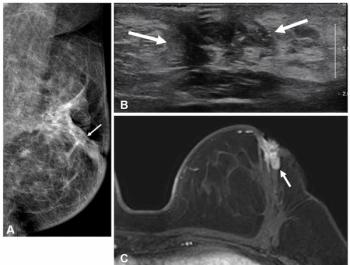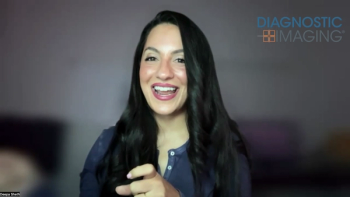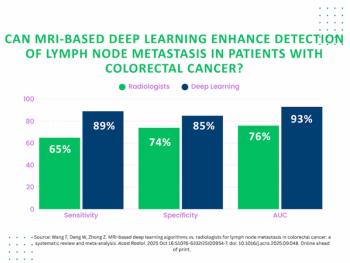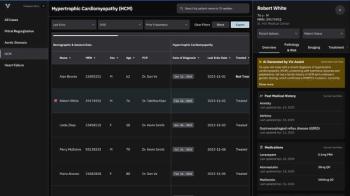
Multiparametric 18FDG PET-MRI May Reduce Breast Biopsies
Using the combination MP 18FDG PET-MRI improves differentiation of benign and malignant breast tumors.
Combining multiparametric 18fluorodeoxyglucose positron emission tomography with MRI (MP 18FDG PET-MRI) improves differentiation of benign and malignant breast tumors, and may reduce the number of unnecessary breast biopsies, according to an article published in
Researchers from the Medical University of Vienna in Austria undertook a study to assess if combining MP 18FDG PET-MRI, using dynamic contrast-enhanced MRI (DCE-MRI), diffusion-weighted imaging (DWI), three-dimensional proton MR spectroscopic imaging (3D 1H-MRSI) and 18FDG-PET would improve differentiation of breast tumors.
A total of 76 patients, mean age 55.7, participated in the study. All patients had a mammography or ultrasound imaging abnormality that was suspicious or inconclusive. They then underwent fused PET-MRI of the breast with 18FDG-PET/CT and MP MRI.
“DCE-MRI is a very sensitive test for the detection of breast tumors, but is limited in visualizing the functional properties cancer cells acquire during development,” co-author Katja Pinker, MD, said in a release. “Therefore, there is still room for improvement. PET-MRI mirrors cancer biology and allows accurate diagnosis of breast cancer without a biopsy. Additionally, the more accurately we understand a tumor’s biology, the better we can tailor therapy to each breast cancer patient’s individual needs.”
There were 53 malignant and 23 benign breast lesions, confirmed with histopathology. “MP 18FDG PET-MRI yielded a significantly higher area under the curve (AUC) of 0.935 than DCE-MRI (AUC, 0.86; P = 0.044) and the combination of DCE-MRI and another parameter (AUC, 0.761–0.826; P = 0.013–0.020),” the authors wrote. “MP 18FDG PET-MRI showed slight further improvement to MP MRI with three parameters (AUC, 0.925; P = 0.317).” The number of unnecessary breast biopsies would have been reduced by using this type of imaging, they added.
“Performing a combined PET-MRI is currently less cost-effective than existing breast imaging methods,” noted Pinker. “However, a significant reduction in unnecessary breast biopsies by using this combined method may improve the cost-effectiveness.”
Newsletter
Stay at the forefront of radiology with the Diagnostic Imaging newsletter, delivering the latest news, clinical insights, and imaging advancements for today’s radiologists.

































